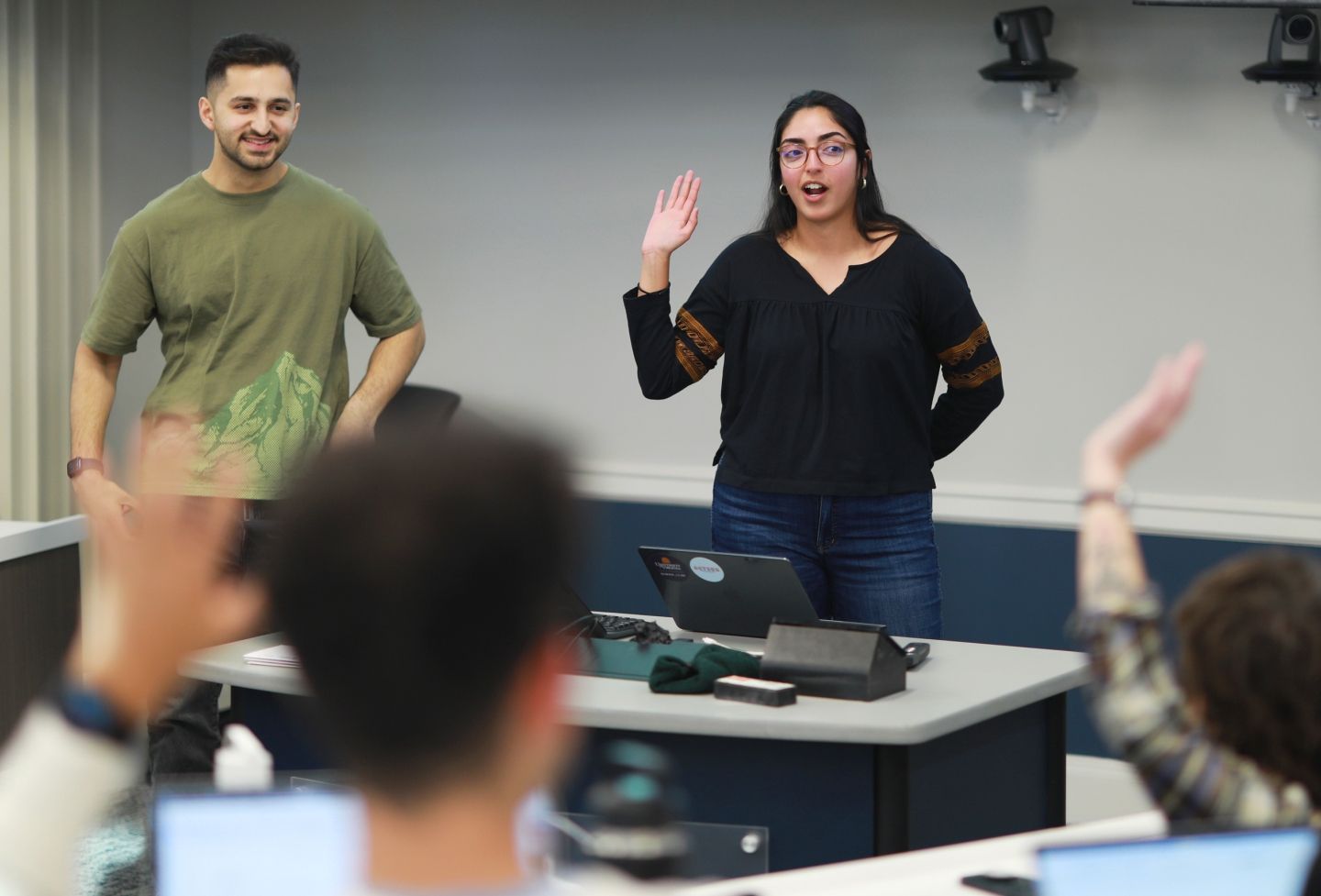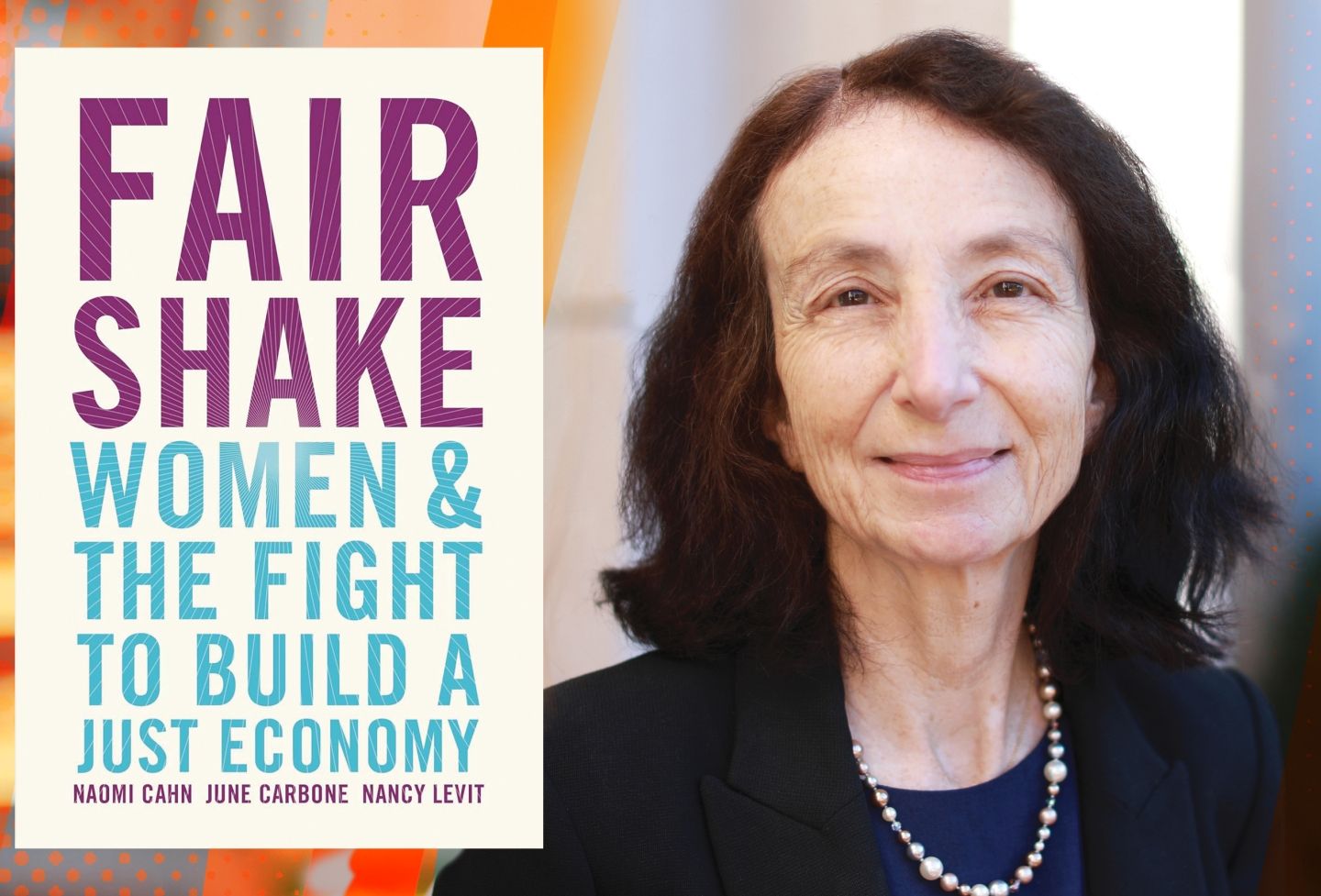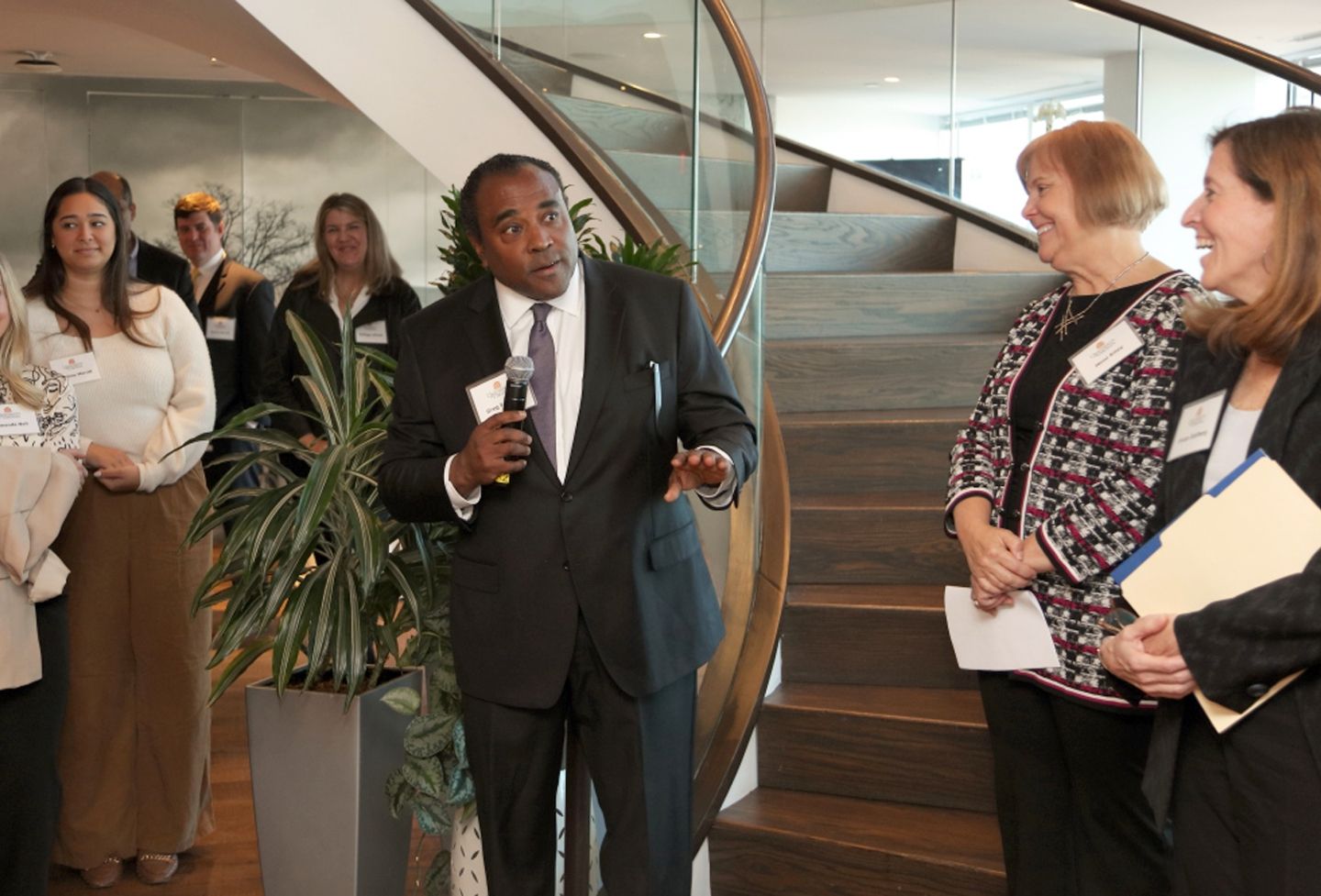President Resembled King at Constitution’s Founding, Prakash Says
Though most of the Constitution’s framers hoped to create an executive officer who would be distinct from a monarch, many contemporary observers believed the president was a king in everything but name, Professor Saikrishna Prakash said Tuesday.
Prakash, who delivered the lecture “No More Kings?” to mark his appointment as David Lurton Massee, Jr., Professor of Law, said the title referred to the name of a 1975 “Schoolhouse Rock” cartoon showing why America decided to avoid a monarchy.
It’s a characterization most Americans might agree with today, he said.
“When someone quickly says that the Constitution and the history that preceded it established that there would be no more kings, they have adopted too unsophisticated an approach to the question,” Prakash said. “So my conclusion, my friends, is that the fountain of knowledge, ‘Schoolhouse Rock,’ may very well be wrong. Maybe Article II does create a monarchy of sorts and maybe the president is a king of sorts.”
Although the Constitution doesn’t establish executive features that reflect some conventional traits of monarchy — pomp and circumstance, hereditary succession and life tenure — many of the president’s powers and features were similar to those of monarchs at the time, Prakash said. Although some monarchs had near-absolute power in the 18th century, many did not.
Limited or constitutional monarchs “lacked absolute powers, but tended to have certain executive and legislative powers,” Prakash said, citing King George III. “England, via a series of constitutional statutes or parliamentary statutes, had famously constrained the monarch’s powers in various ways.”
Some monarchs at the time were also elected, such as the pope and the Polish king.
“When an elective monarch died or abdicated, an electoral college would then select a new monarch,” Prakash said.
Some people praised elective monarchies. “But the problem with electoral colleges is they were often subject to foreign influence and intrigue. Wisdom, knowledge, sound decision-making would often be subordinated to bribes and influence.”
Although a majority of U.S. constitutional delegates did not favor establishing a monarchy, many wished to see the executive at least resemble a monarchy, Prakash said. But what a monarchy entailed was vague at the time. Some argued that war powers, an absolute veto and the ability to appoint judges comprised a monarchy, while others said that as long as the proposed executive was impeachable he would not be a monarch.
Prakash said the coalition of delegates in favor of a strong executive ended up having a significant influence on the powers of the president because they were persistent.
“These people held together as a coalition throughout the convention,” he said. “And whenever they lost, they just re-proposed something later on. They just never quit.”
Some believed that the delegates would not have made the president so powerful if they had not believed George Washington would be the first to hold the office.
“In a sense, delegates voted to strengthen the presidency recognizing that America’s most illustrious and one of its most virtuous citizens would first occupy the office,” he said. “In some measure the office was tailor-made for the man.
“In any event, with the creation of a single executive with more powers than originally thought possible, the stage was set for claims of monarchy,” Prakash said.
After the Constitution was ratified, foreigners and even monarchs from other nations believed the president was a king under the title of president. The president had many of the powers monarchs had — he was commander-in-chief, had the power to make treaties and judicial appointments, and could grant pardons. The U.S. Electoral College recalled the systems used to elect the Polish and Papal monarchies. Even Samuel Johnson’s dictionary, published in 1755, included “president” as a synonym for “monarch.”
Antifederalists, those who favored a weaker federal government, were especially quick to call the president a monarch.
Prakash cited antifederalist Patrick Henry, who said of the Constitution, “Among other deformities, it has an awful squinting; it squints towards monarchy: And does this not raise indignation in the breast of every true American?”
But after 1789, Americans were less concerned about whether they had a king as president.
“The categorization, the classifications didn’t matter,” Prakash said. “They were on to more practical matters. In practice some of these practical matters dealt with executive authority or executive forms. There were various fights about whether the presidency should have so-called high-tone features — pomp and circumstance.”
For example, some opposed the president’s address to Congress as too similar to the annual address of the English crown. Some senators wished to have the enacting clause that prefaces all bills include the president and not just mention the House and the Senate, as is the custom today.
“It was successfully opposed on grounds that this would mimic English style, again,” he said. “These skirmishes over form highlighted the Constitution’s monarchical features.”
Prakash said the implications of the history behind the president as monarch are modest.
“I don’t think this history suggests that the president has or should have additional powers just because many regarded the president as being a monarch at the time,” he said. “Having said this, I suppose this history does cast grave doubt on the common argument that the president should not be understood to have a particular power over officers or over foreign affairs or over any other subject matter because the framers were opposed to a monarchy and did not create one.”
One obvious implication of the president’s features and powers is that they virtually guarantee that those opposed to presidential assertions of power will exclaim “monarchy,” Prakash said.
“Such claims are an inevitable part of our constitutional discourse,” he said. “If such claims were made even in the absence of a president, of course they’re going to be made in the face of a flesh-and-blood president who seems to have exceeded his powers.”
Founded in 1819, the University of Virginia School of Law is the second-oldest continuously operating law school in the nation. Consistently ranked among the top law schools, Virginia is a world-renowned training ground for distinguished lawyers and public servants, instilling in them a commitment to leadership, integrity and community service.


